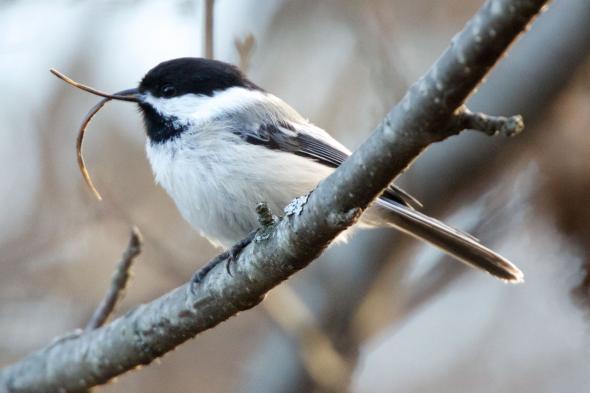Mystery of Bizarre Bird Deformities May Be Solved

ANCHORAGE, ALASKA Scientists working with sophisticated DNA sequencing technology think they may have solved a 20-year-old mystery of what has caused thousands of Alaska’s wild birds to be afflicted with deformed, twisted beaks. The findings suggest that a newly discovered virus – poecivirus – may be the culprit behind the bizarre beak deformities in chickadees, crows, and other birds. Birds with the defective beaks, which sometimes cross like warped chopsticks, starve to death or die early. The virus may endanger the health of bird populations around the world, particularly sensitive endangered species, says Colleen Handel, a research wildlife biologist with the U.S. Geological Survey in Anchorage. Already the deformities seem to be spreading: Bird watchers in the Pacific Northwest, Great Britain, India, and South America have been reporting growing numbers of birds with deformed beaks, including 24 species in North America and 36 in the United Kingdom. If the virus is causing these twisted beaks – a condition called avian keratin disorder – it raises many questions. Why is the pathogen emerging now? Why is it spreading? Is it newly evolved? Is there something in the environment that is fueling it? Biologists at the USGS in Anchorage first observed these deformities among black-capped chickadees in the late 1990s. Since then, the researchers, now assisted by California molecular scientists, have been trying to find the cause. They’re not quite there yet. The scientists cautiously say in their new study that they’ve detected “a strong, statistically significant correlation between poecivirus infection and avian keratin disorder and black-capped chickadees.” Screening of 19 chickadees with twisted beaks revealed that 100 percent were infected with the virus, while only two of nine chickadees without the deformity had the virus. Why those two birds were infected but did not have twisted beaks is unknown, but it’s possible that they had only recently been infected so the abnormal beak growth was not yet detectable. Two northwestern crows and two red-breasted nuthatches with twisted beaks also had the virus. “It’s really exciting that we found this new virus, and it looks like it really could be the cause. But we haven’t yet proven that it is the cause of the disease,” says University of California, San Francisco, disease ecologist Maxine Zylberberg. She discovered the virus and its relationship with avian keratin disorder using next-generation genome sequencing while working with a team at the California Academy of Sciences. To prove the new virus is causing avian keratin disorder—rather than just coincidentally found in the deformed birds—the researchers will test more samples and more species. The USGS plans to design experiments exposing healthy birds to the virus to see if they develop beak deformities.
Read More: http://news.nationalgeographic.com/2016/08/twisted-beaks/

